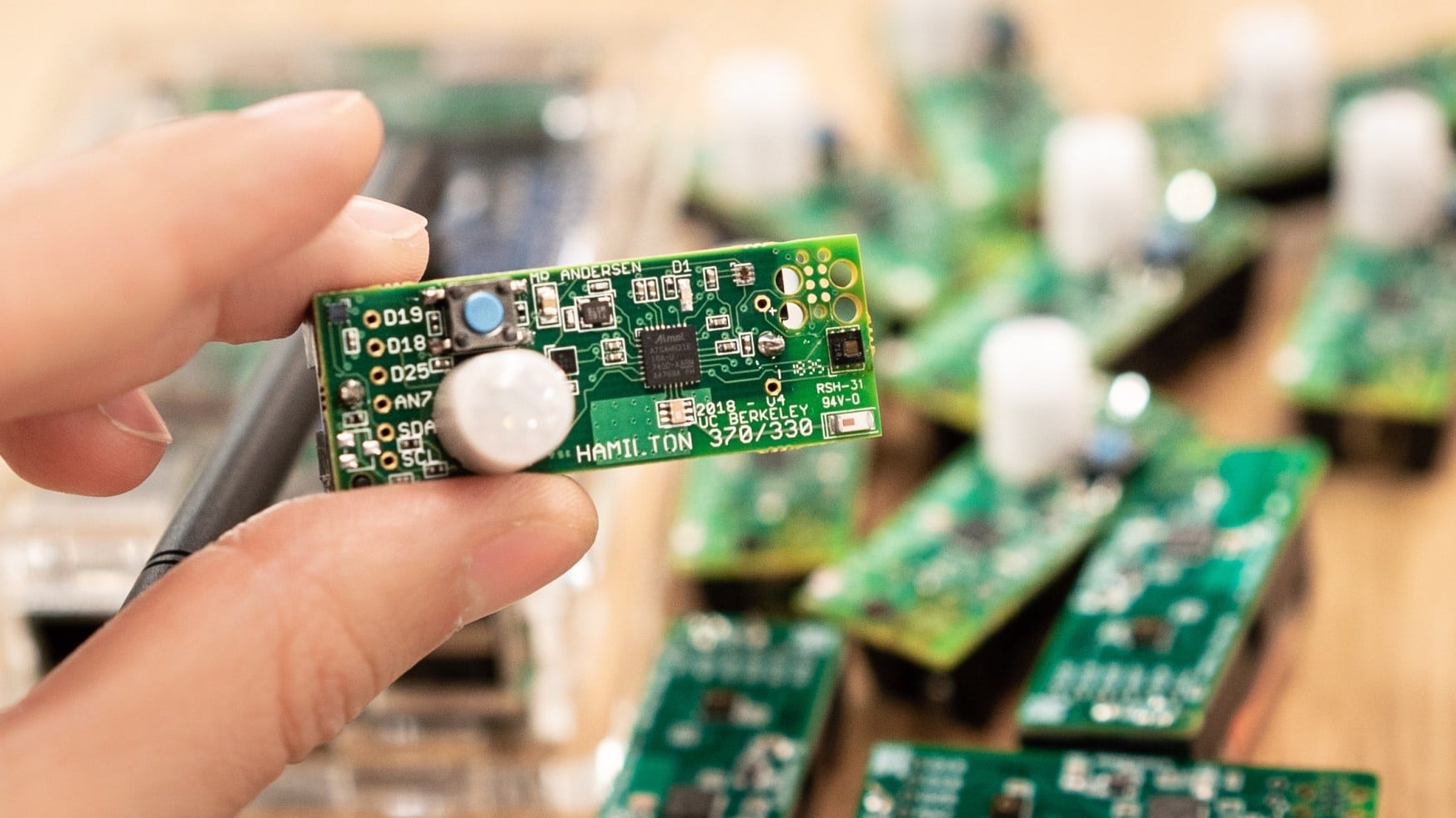On March 31, 2021, the Hamilton project came to a close after four and a half years. Named after Alexander Hamilton, whose portrait appears on the ten-dollar bill, the project developed a modular, open-source, low-cost wireless sensor system to enable energy-efficient building operations for only ten dollars.
“Not only did it fund thought-leaders like PhD student Michael Andersen and post doc Hyung Sin Kim,” said Therese Peffer, Hamilton’s project manager, “it also developed new software for network communications that industry can adopt.”
Project Inception
The brainchild of then-PhD student Michael Andersen, the Hamilton sensor continued a 25-year legacy of Cal’s Computer Science Department leadership in wireless sensors. Sponsored by the US Department of Energy, the project was headed by co-principal investigators UCB Computer Science Professor David Culler and CIEE director Carl Blumstein, along with project manager and CIEE program director Therese Peffer. Sensors for improving building performance are rapidly populating the market, driven by efforts to reduce greenhouse gas emissions and improve the interior environment for more healthy and productive spaces. The Hamilton project aimed to create, evaluate and establish the foundations for building energy efficiency applications using pervasive, low-cost wireless sensors – and to demonstrate the effectiveness of these foundations. The sensor system integrates with traditional Building Management Systems (BMS) and consumer-sector building components.
Culmination: Components and Collaborations
The completed project includes a sensor system with a 5-year battery life that is fully programmable, wireless, and, most importantly, low-priced. Data communication between the sensors and controls systems was established by creating an attack-resistant middleware tier and integrating data transport among applications, components and services. By securely integrating the sensor with building management systems, thermostat or lighting controls, building heating ventilation and air conditioning (HVAC), lighting, plugloads, as well as connecting to the grid, the connections will enable many kinds of applications (e.g., diagnostics, demand response) that can reduce energy consumption and improve occupant comfort and satisfaction.
The project included iterative hardware design, incorporating a high-performance database (BTrDb), creating and iterating the development of secure data middleware (BOSSwave, WAVE/WAVEMQ), working with and pushing the development of an open-source tiny operating system RiotOS, and implementing and improving protocols such as Thread/OpenThread and TCP/IP. The hardware benefited from careful design to drive down the cost, which included a System-on-a-Chip (SoC), chip antenna, single crystal and only five passive components. Careful design of the operating system created a low-power design to enable a long life with small batteries. The hardware included several sensors: temperature, radiant temperature (90º cone), relative humidity, magnetometer, accelerometer, and light, with an optional occupancy (Passive InfraRed) sensor.
The project was the basis of several applications, both internal to the research team and other researchers and professionals at other institutions. In collaboration with the Center for Information Technology Research in the Interest of Society (CITRIS) and the Banatao Institute, several applications used the sensor hardware as the basis for other complex devices, such as an innovative low-cost ultrasonic anemometer led by Edward Arens, UC Berkeley Professor of Architecture and CITRIS Director of the Center for Environmental Design Research, and an occupant-counting device, Panasonic Grid-EYE Infrared Array Sensor, pioneered by Alberto Cerpa, CITRIS researcher and UC Merced Assistant Professor.
Laying a Foundation for the Energy-Efficient Buildings of the Future
“In my 18 years of managing projects as a grad student and with CIEE,” said Peffer, “the Hamilton project was the most productive and influential.” Over the course of the project, the team created and evaluated three generations of low cost wireless sensor systems and the technological foundations – hardware, secure middleware, database — of energy-efficient building operations. The project funded several graduate students and postdoctoral scholars, who produced 14 journal papers and conference presentations based on this work. The research added to the understanding of these technical foundations and built out efficient communication protocols and interoperation with applications and building systems that will help drive the next generation of energy-efficient buildings.
Read more about the project through publications written by the team:
Hamilton: a cost-effective, low power networked sensor for indoor environment monitoring
Do Not Lose Bandwidth: Adaptive Transmission Power and Multihop Topology Control
WAVE: A Decentralized Authorization Framework with Transitive Delegation

